Posté par: Eric Montalbetti Il y a 1 année, 9 mois
Introducing the Mode/Scale software developed by Serge Lemouton (programmer) & Eric Montalbetti (composer) in Max/Bach
As many other composers of my generation (let’s say the composers born from the late 50s to early 70s – I was born in 1968), I have tried to conciliate the double heritage of serial and modal music : serial as meant in the music of Arnold Schönberg as well as developed by all the so-called Darmstadt composers, and modal as inherited from Fauré, Debussy and, above all, Olivier Messiaen.
In the previous generation, Luciano Berio and Witold Lutoslawski had already reintroduced harmonic thinking in the serial composition process, through the concepts of polarity (Berio) and notes reservoirs (Lutoslawski) which are very important to me.
But I also realized that there is a kind of immanent logic in the organization of the 12 tones in the study of all the possible iterative scales of level 1 or 2, that is the scales which can be developed on the basis of a simple pattern made of a succession of tones and semi-tones, excluding the repetition of more than 2 same intervals.
I call them « mode/scales » (« modéchelles » in French) because some are octaving modes (reproducing exactly the same notes from an octave to another), and others are non-octaving scales, meaning that the suite of notes can be different from an octave to another, which of course depends on whether the basic pattern of the mode/scale is made within a subdivision of the octave or not.
I have numbered the mode/scales after the interval in which its basic pattern is defined (from 0 for chromatism to 11 for the octave), adding a letter when there are different possible patterns within the same interval.
There are precisely only 8 octavian modes and 10 non-octavian scales following this rule, which I call mode/scales (modéchelles), so this is a closed and coherent harmonic system.
Most of them are of limited transpositions, and its name also gives the number of its limited transpositions (from 0 for chromatism and 1 for the full-tone scale to 10 transpositions for the 10a, 10b and 10c scales, and of course 11 transpositions for the modes 11a, 11b and 11c composed within the octave).
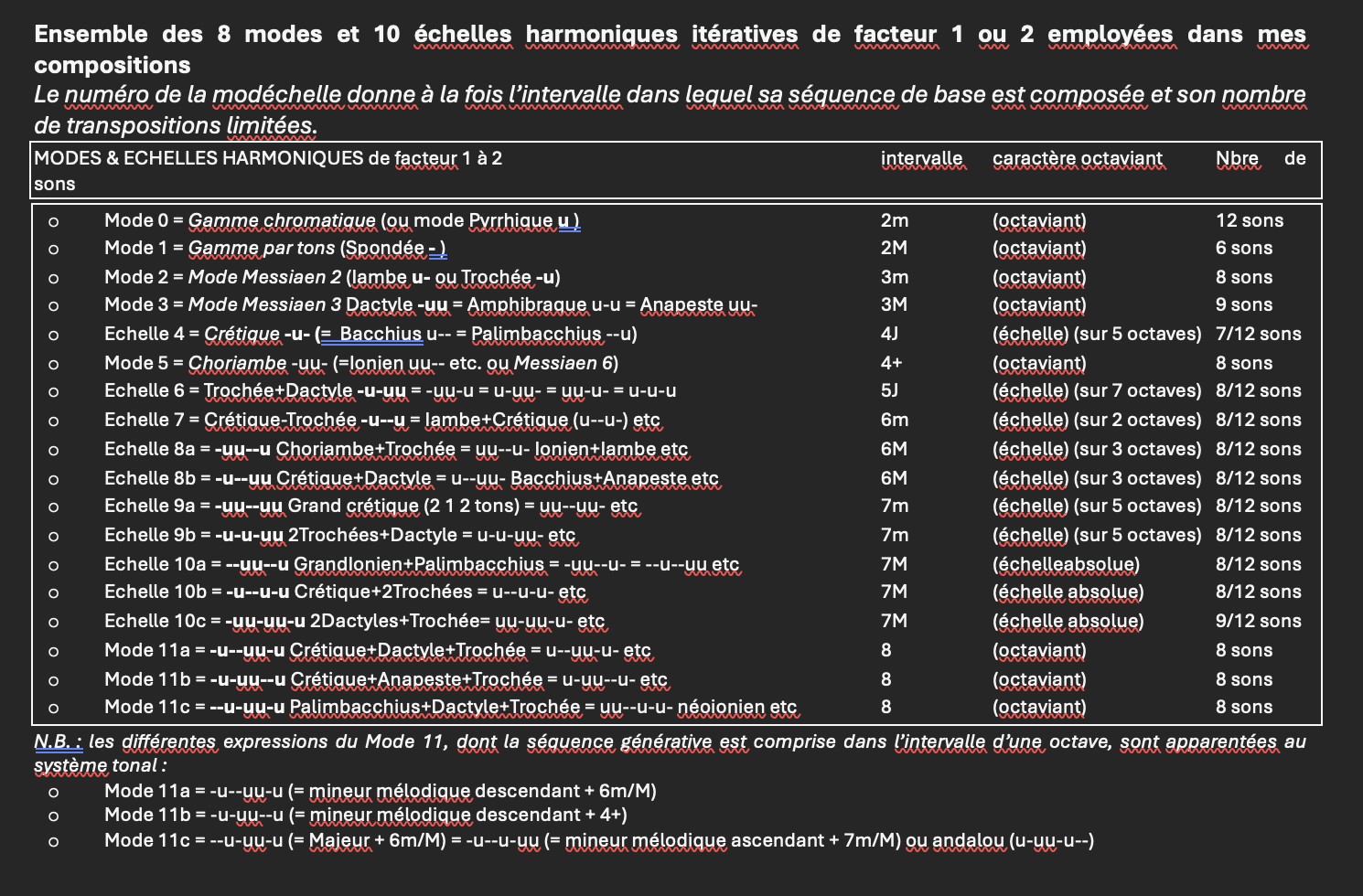
Please note that I refused to systematically reduce the definition of the mode/scales to the octave (as opposed to Messiaen for instance, who did not escape the influence of tonal music in this respect) because I do not see a proper reason to follow this tradition since we are composing with the 12 tones. On the contrary, we can find in the structure of each mode/scales a rational justification for organizing the 12 tones on the full instrumental range with possible or excluded octave liner.
Besides, the mode/scales being iterative scales, the notion of fundamental note is not always relevant and very much depends on the context, but all the possible permutations of the basic pattern can be seen as one of the limited transpositions of the same mode/scale. Which simplifies our analysis.
Starting from this point of view, our software makes it possible to further explore all the mode/scales, to compare them, to note their characteristics, to deduce the greater or lesser relationships, that is to say rules of modulation or possible sequences with each other, or on the contrary oppositions, and to develop their potential to compose chords from more or less complex arpeggios.
We can in fact develop from the mode/scales simple arpeggios (every 2 notes, every 3 notes, etc.) as well as derived arpeggios, respecting the same proportions as the basic pattern specific to each mode/scale, following a chosen number of notes (for example every 2 and every 4 notes applied to mode 3 (uu-) are the 1st, 3rd, 5th and 9th notes etc.)
We can even play with the various permutations of each mode/scale in the construction of its derived arpeggios (which can be especially relevant depending on which note or degree of the basic pattern you start from).
And it is possible to derive a second time a derived arpeggio.
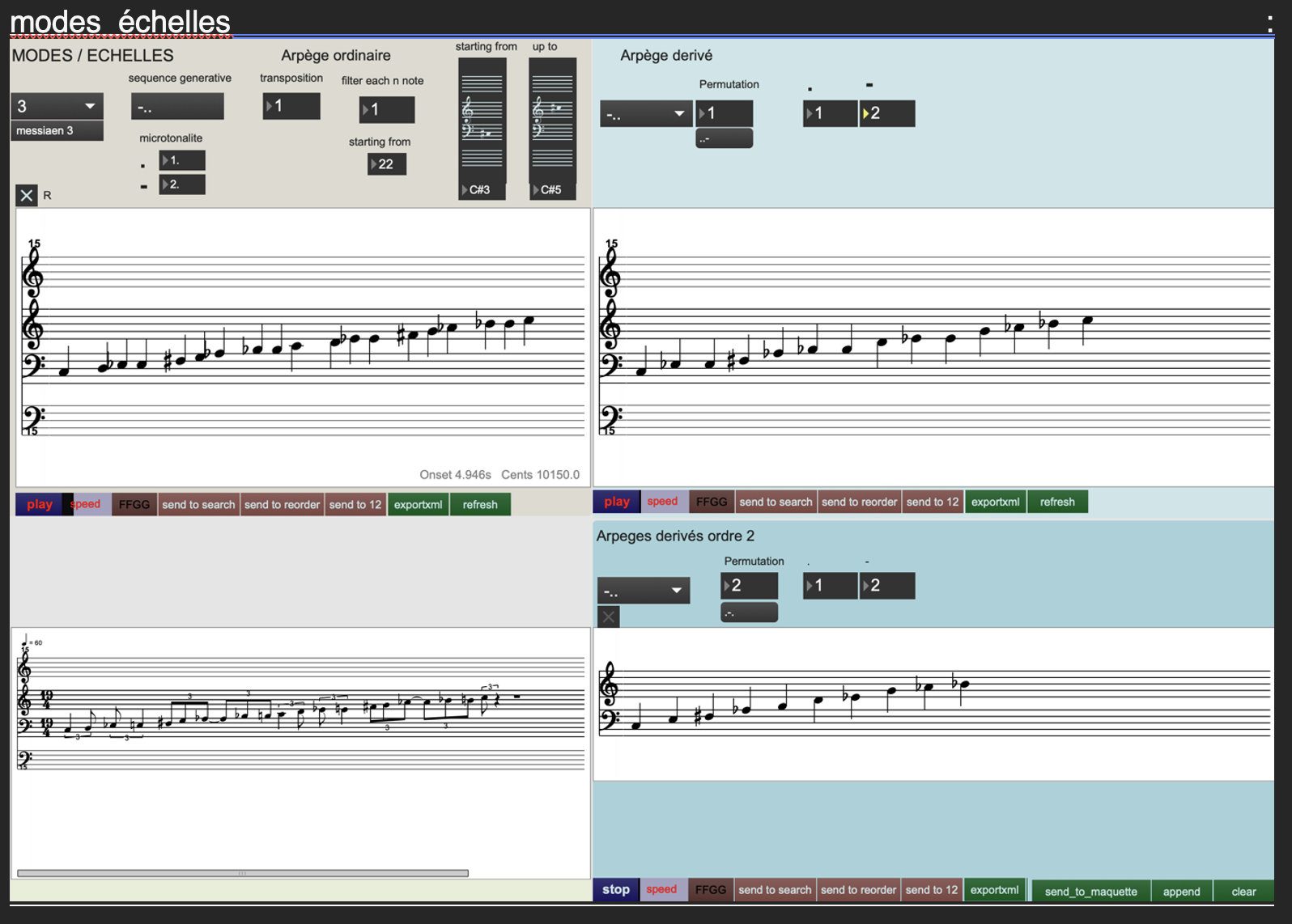
It is obviously interesting to be able to check the order of appearance of the 12 sounds as you go through these mode/scales or their various arpeggios. You can choose from which note to start the evaluation and the software will automatically select and color the notes in their order of appearance.
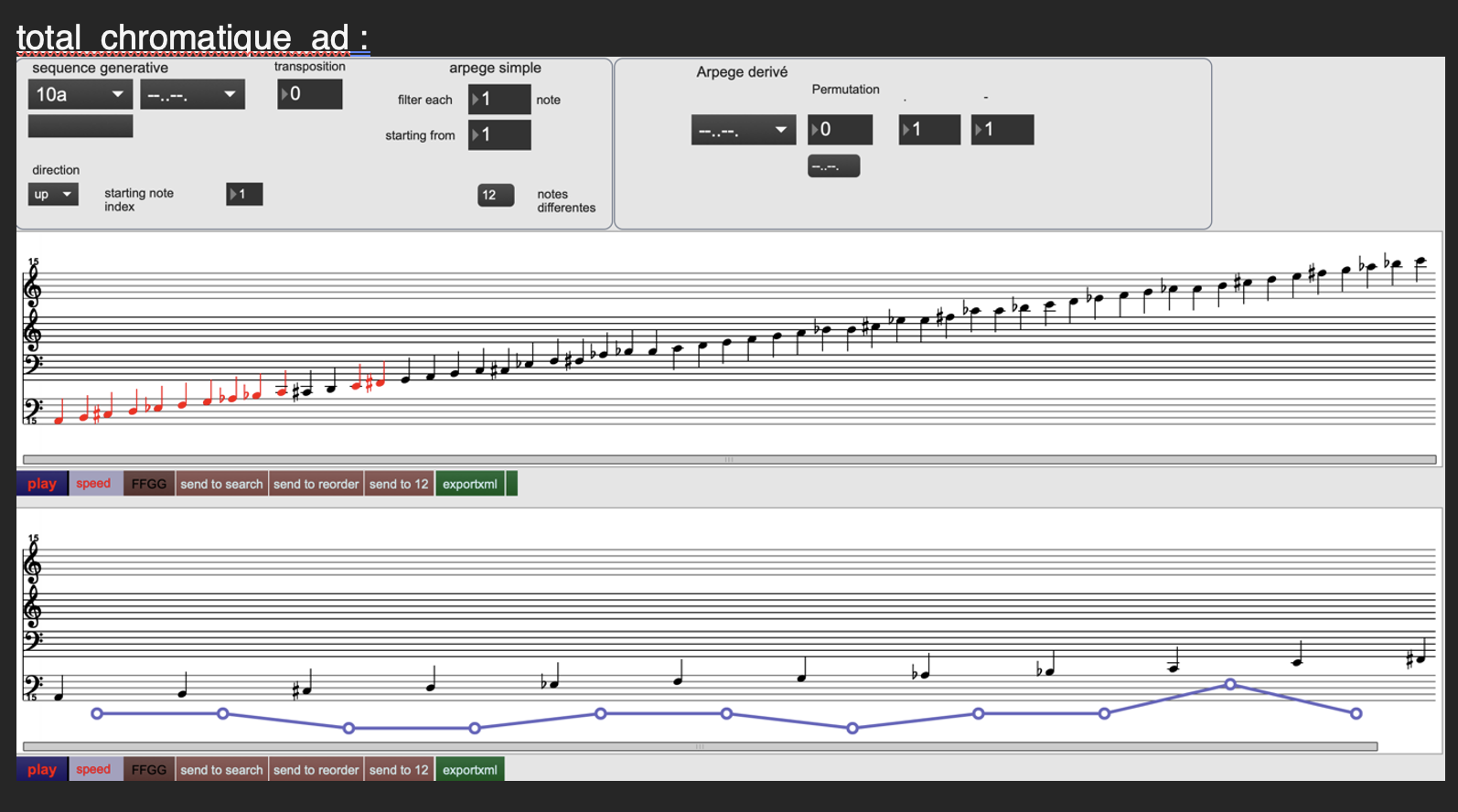
It is also interesting to compare two different results and check how many notes they have in common, whether between 2 mode/scales or between 2 arpeggios.
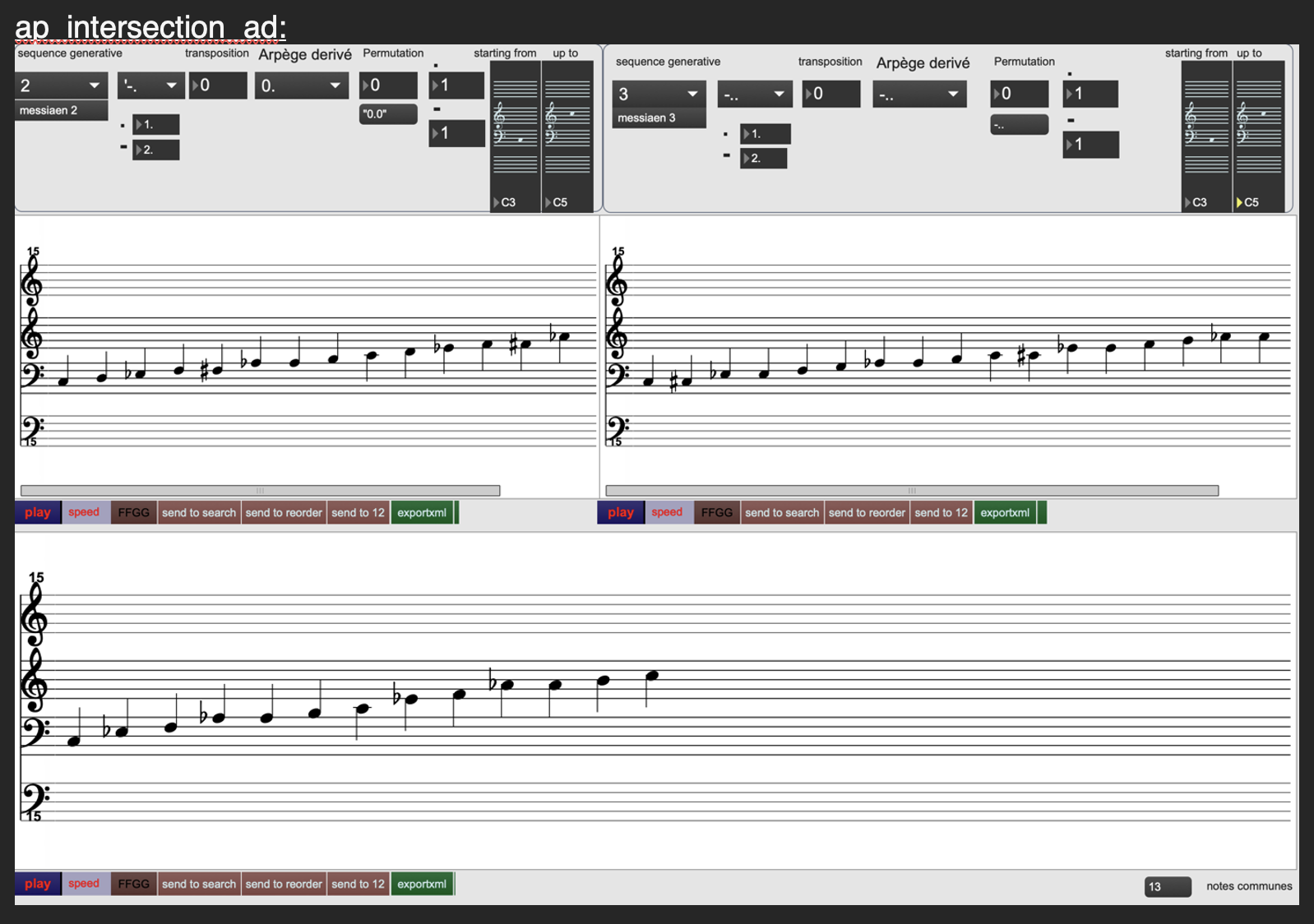
It is also interesting to identify the characteristic symmetries of certain derived arpeggios, what the software will show graphically.
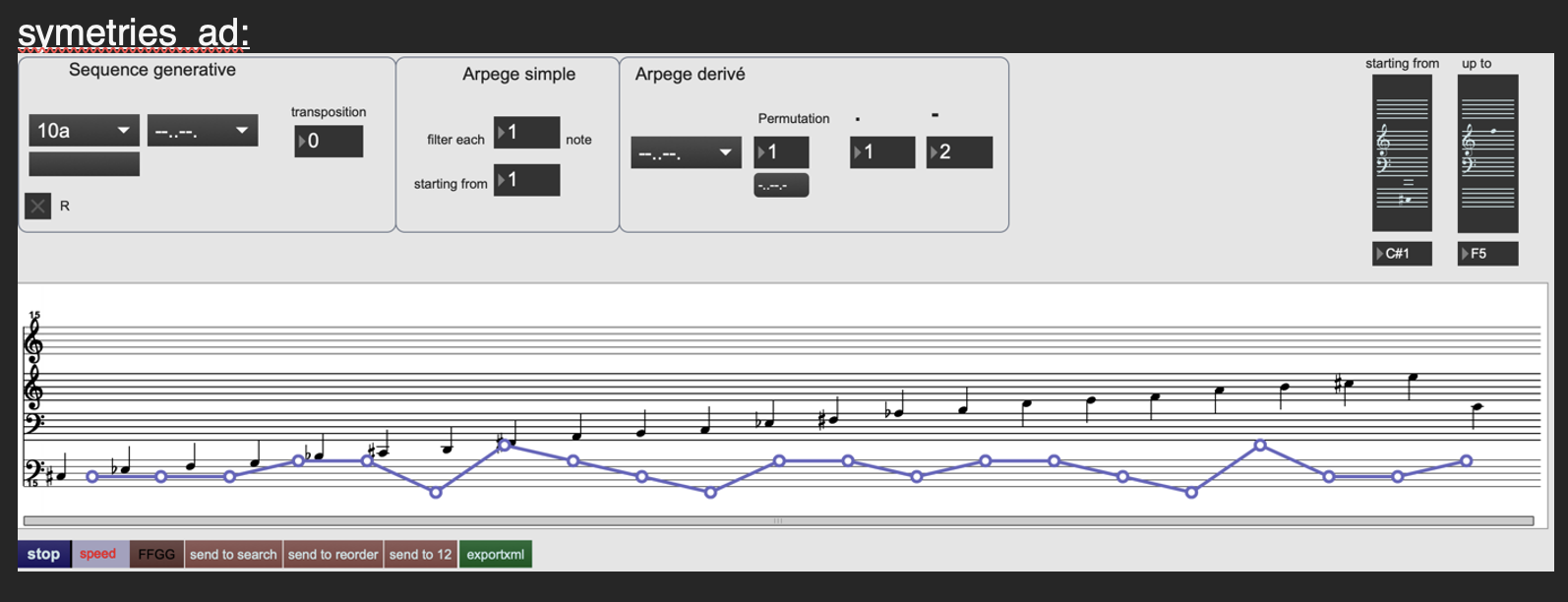
Finally, we may want to reorder the results in one way or another (rectus, retrograde, from the center to the ends or from the ends to the center, or even distributed randomly until satisfaction, etc).
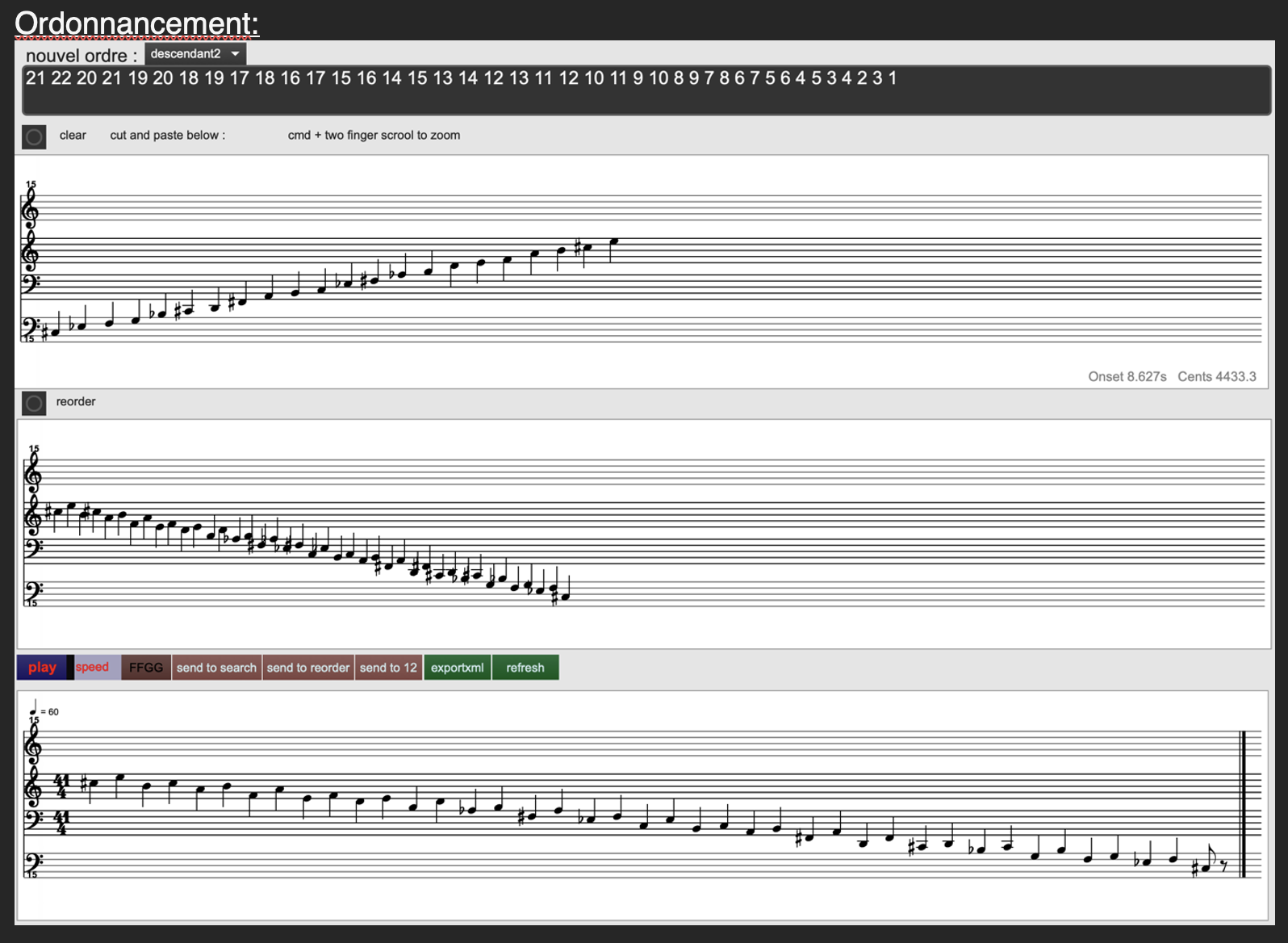
With the “maquette” tab, you can also copy/paste several successive results to then export them together in a score editor.
And we can also explore the interest of superimposing different models on several voices (polymodality).
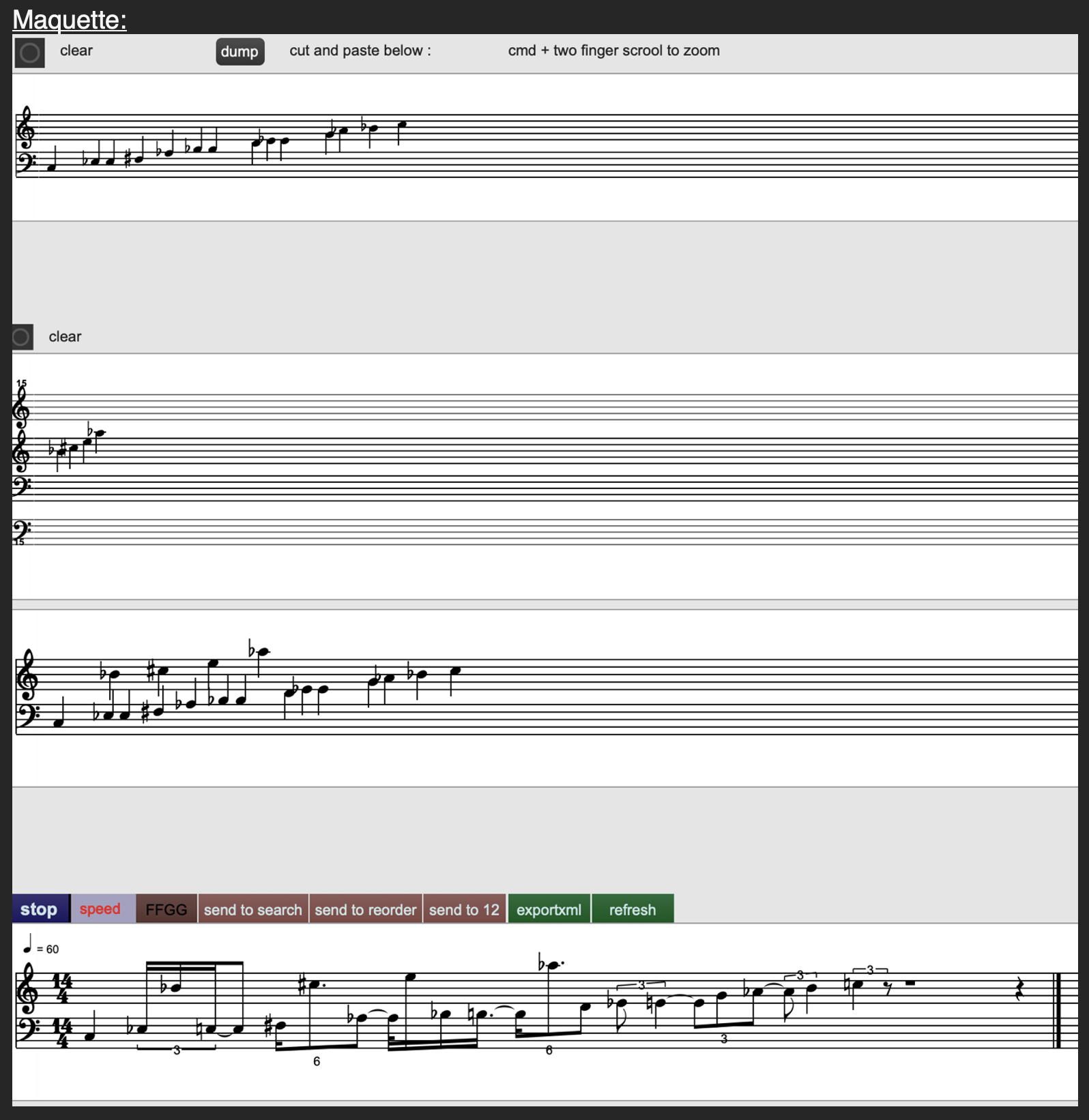
Please also note that it is always possible to send the result from one tab to another to study something from several perspectives.
Conversely, the software makes it possible to analyze a given musical fragment (defined as precise pitches or as a series of intervals in absolute terms) to know to which mode/scale or even to which simple arpeggio or derived arpeggio of a mode/scale it belongs.
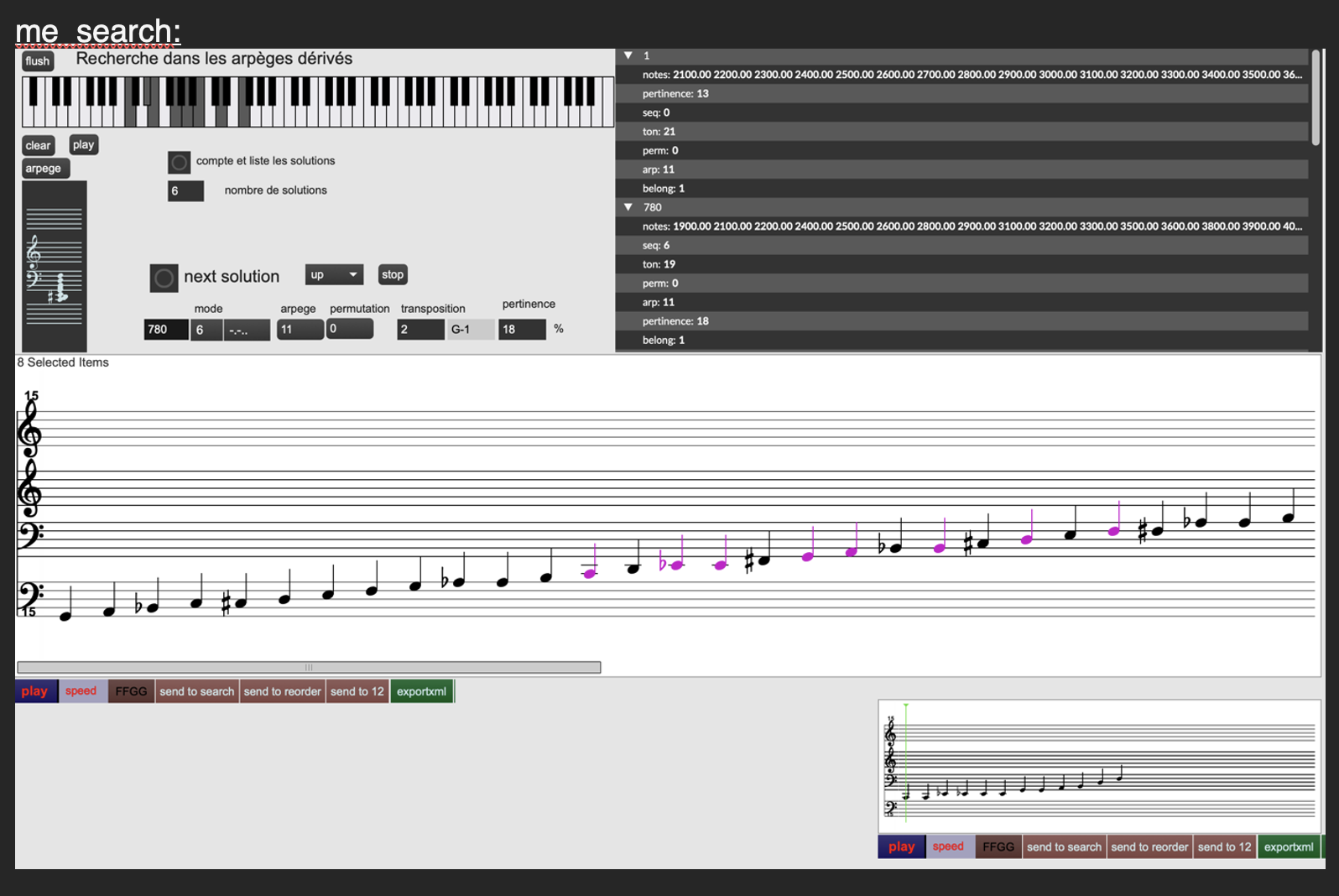
This software will remain in development during the composition of an important cycle of piano pieces to be first performed in June 2026, but a first version will hopefully be made available on the Ircam Forum after the coming summer.
In the future, we plan to allow other composers to use this software by entering their own harmonic system, that is to say to compose their own library of mode/scales specific to their own style.
For instance, we may wish to open the system to iterative modes of factor 3, as well as to more “classic” designed modes (Major, minor, Dorian, Andalusian, etc.).
It is even already possible to study iterative scales using micro-intervals.
Hoping you will enjoy this new approach to harmonic thinking.
Partager sur Twitter Partager sur Facebook
Commentaires
Pas de commentaires actuellement
Nouveau commentaire